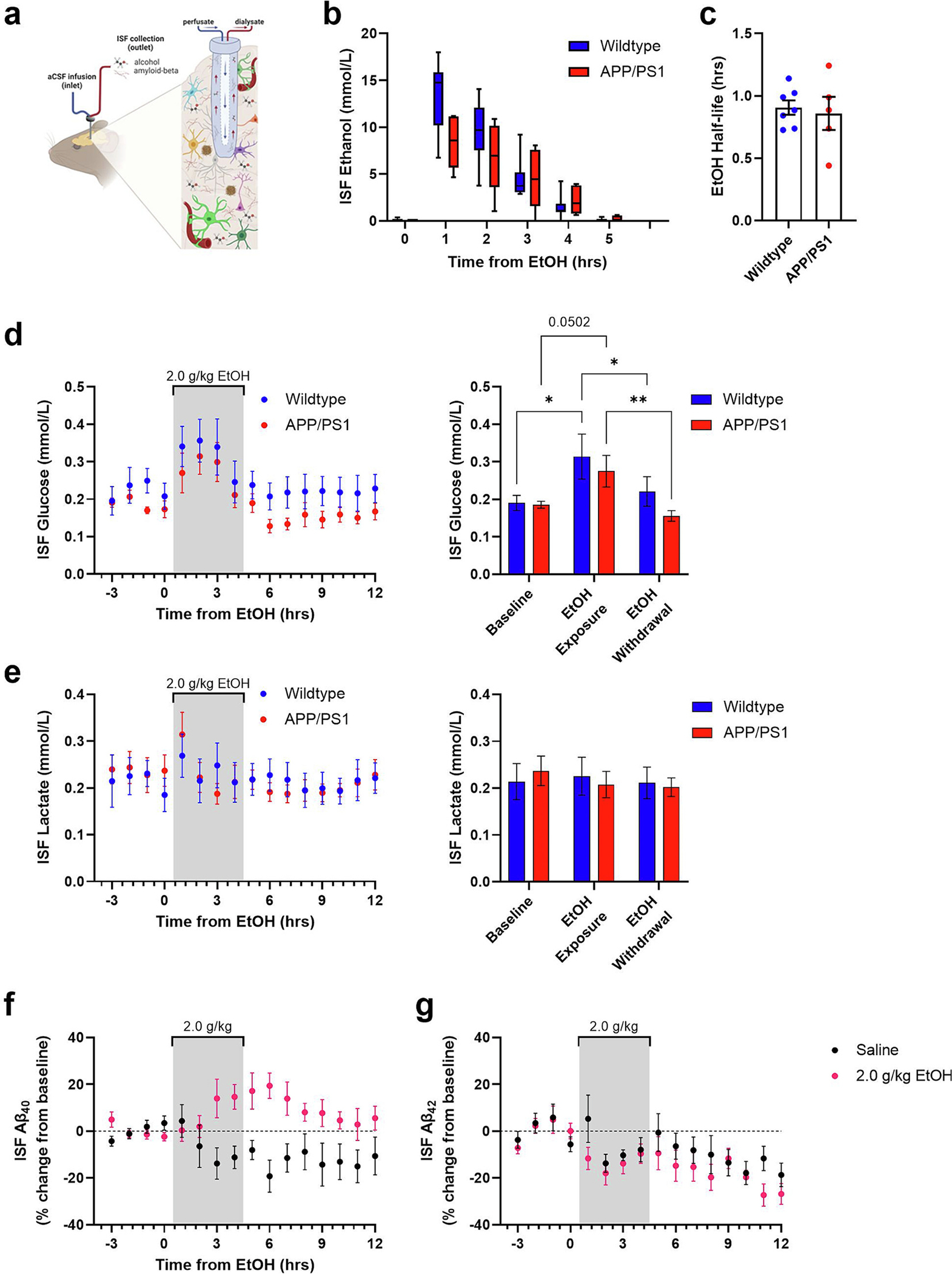Fig. 6.

Ethanol acutely modulates ISF Aβ40, but not ISF Aβ42, and ISF glucose in 3-month-old APP/PS1 mice. a) Schematic of 38 kDa in vivo microdialysis to sample brain hippocampal interstitial fluid (ISF). b) Ethanol is detectable in the ISF for 4 h after acute ethanol exposure (2.0 g/kg, ip; wildtype, n = 9; APP/PS1, n = 6). c) ISF half-life is similar between 3-month-old wildtype and APP/PS1 mice (wildtype, n = 7; APP/PS1, n = 5). d-e) ISF glucose levels increase during an ethanol exposure (gray bar) and return to near-baseline levels during withdrawal (wildtype, n = 8; APP/PS1, n = 7). f-g) Acute ethanol does not affect ISF lactate levels (wildtype, n = 7; APP/PS1, n = 7). h) ISF Aβ40 levels increase during withdrawal from 2.0 g/kg ethanol (saline, n = 6; ethanol, n = 9). i) ISF Aβ42 levels are unaffected by 2.0 g/kg ethanol (saline, n = 4; ethanol, n = 7). *p < 0.05; **p < 0.01.
